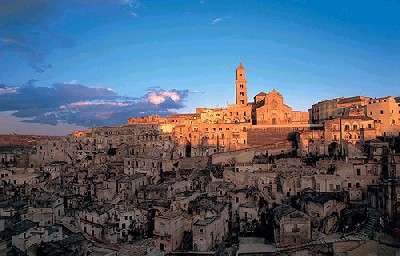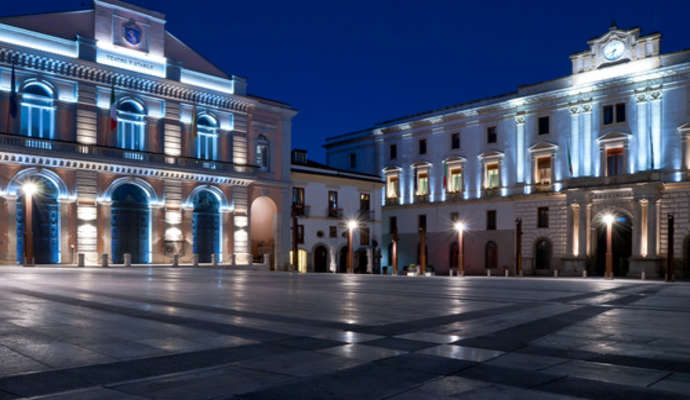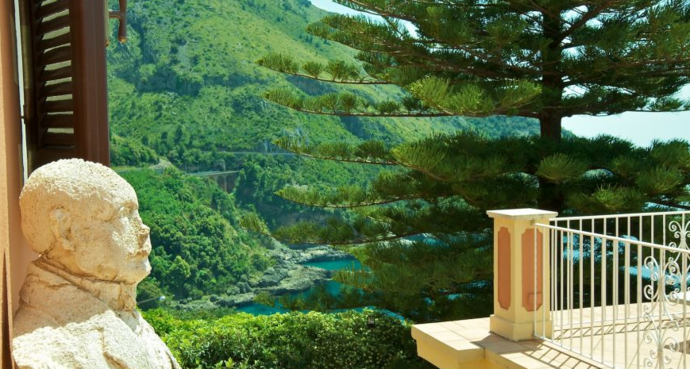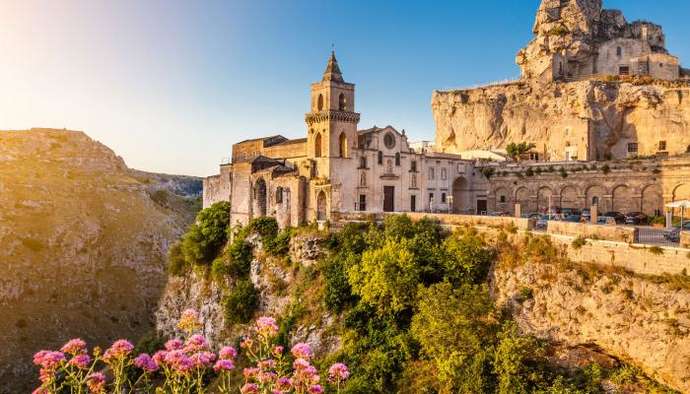|
:: ::
| I Viaggi Del Gusto UNDER THE TUSCAN SUN |
|
 BASILICATA HIGHLIGHTS BASILICATA HIGHLIGHTS
- THE MATERA STONES THE UNESCO HERITAGE
- THE MARATEA COASTLINE
|
LIST PRIVATE GUIDED TOURS : BASILICATA AS YOU WANT
|
|
|
BASILICATA AUTHENTIC MAGIC: MYSTICAL LANDS WHERE TIME HAS STOPPED
Do you like traveling to discover unique things?
Do you love getting involved in experiences outside the known to get rich?
You want to live the moment to appreciate how much more different
... what you alone are not sure you want to try ...
.. WE WE GUIDE YOU IN THE EXPERIENCE, THE ONE THAT YOU'RE NOT SURE YOU'RE SURE AND THAT WE ARE ONLY FOR YOU!!
|
CONTACT OUR EMOTIONS' SAILOR
|
VISIT BASILICATA
|
|
_________________
VISIT BASILICATA
_________________
MATERA
EXPERIENCES
MATERA LANDS: SPIRITUAL NATURE AND STONES [......]
_________________
VULTURE
Nature Bath at the Lake by Boat with Food Tour and Pic Nic
_________________
|
|
MAIN CITIES
POTENZA THE CAPITAL

Potenza was built on a hill more than 800 metres high and it was inhabited since the IV century B.C. It was probably built as a consequence of the destruction of the close village of Serra di Vaglio, whose ruins are still visible. Its good geographic position made it an important crossroads in the Mediterranean, with the benefits of the Greeks influence.Under the Roman domination, Potenza was first a prefecture, then an important municipality. S. Vito’s Bridge was built around that time (248-305 B.C.) and so was the Roman villa that the Malvaccaro Mosaic belonged toThis town has a beautiful old centre with several churches, the Cathedral, the Castle Tower, and the Museum.Every year in May an event called ‘Sfilata dei Turchi’ (Turks’ Parade) takes place.This is one of the centres in Basilicata, together with Tito, Pignola, Vaglio and Trecchina, where the Gaul-Italian dialect is spoken. This probably depends on the migration (XIII century) of some peoples coming from areas in the North of Italy (Monferrato), that amalgamated together with the local communities (G. Rohlfs).

The only region in Italy that can boast two names – Basilicata, however, is the officially recognised one – is a land in which human and natural history have left important traces ever since it has emerged from the sea. In olden times it was known as Lucania, from the Latin ‘lucas’ either because it was a woody land, or because it was populated by the ‘Liky’ an ancient people coming from Anatolia, or maybe because it was the land reached by a warlike people who had followed the sun, known as ‘luc’. It was called Basilicata for the first time in a document dating from 1175, originating probably from the name ‘Basiliskos’, a Byzantine administrator.For years Basilicata, whose people even today prefer to be called ‘Lucanians’ rather than ‘Basilischi’ or ‘Basilicatesi’, seemed to be the place where all the enormous problems of southern Italy were concentrated. Washed by two seas, the Jonian to the south-east and the Tyrrhenian to the south-west, mountainous in the centre with peaks rising above 2,000 m, hilly to the east and with flatlands for a short way to the south-east, Basilicata gives itself over to the traveller, offering him/her the excitement of the discovery of its natural beauty, of its history and prehistory, of its traditions which in some areas conserve the ancestral memories of the origins of man. Then there is its cuisine, simple and genuine which features all the characteristics of the Mediterranean diet.Basilicata knows how to win people over whether their visit is a due to a question of simple curiosity or to their love of travelling over mountain tops and hills that offer breathtaking and unusual panoramas, or then again to the desire to visit cities packed with history or untouched seaside towns with never ending beaches of fine, golden sand where the Greeks landed in the VIII B.C. Basilicata is a land of strong contrasts and a sense of community harmony. It jealously safeguards its own identity where all the typical features of the rural have been conserved, and as if to create contrast even post-modern skyscrapers and bridges built to challenge the laws of gravity, like the one at Potenza, can be found.Even if it is not yet the main aim for traditional tourists, Basilicata is appreciated for its good reception and for the many attractions it offers: health is the key in the natural spas of Rapolla, Terme La Calda and Terme di Ala and Latronico. Nature can be found in the National Park of Pollino, in Gallipoli Cognato Forest, in the Lucanian Dolomites and in the Historical and Archaeological Natural Park of the Murgia and of the Rock Churches of Matera. For those who delight in history, there are the museums of Potenza, Matera, Melfi, Venosa, Metaponto, Policoro, Castel Lagopesole and Irsina. Culture and tradition abound with the folk festivals and with the very important exhibitions in Matera and Maratea. Food and gastronomy, offered by hordes of family restaurants, are the jewels of Lucanian hospitality and its cuisine. The beauty of its seaside is not to be forgotten in the clear waters of Maratea and in Metaponto, Pisticci, Scanzano Jonico, Policoro, Rotondella and Nova Siri. Travelling in Basilicata still offers all the excitement of an adventure, a voyage of discovery into a past packed with history, the feeling of being one with untouched and breathtaking nature and there are also very hospitable people ready to give help and advise anytime it is needed.
MATERA CAPITAL OF CULTURE 2019

The town of Matera rises on a characteristic landscape of a deep ravine with overhanging rocks under which the Gravina stream flows.This town has many faces, the most famous of which is certainly the ‘Sassi’, which the UNESCO has recognized as ‘humanity's patrimony to hand down to future generations’.The ‘Sassi’ are dominated by the Cathedral of Mediaeval Age, and they lodge inside them the suggestive Museum of the Peasant Civilization.All around Matera, in the ‘Murgia’, there is the Park of the Rock Hewn Churches.San Francesco D'Assisi Church, situated in the homonymous square, and San Domenico Church, located in Vittorio Veneto square, are also beautiful.The Tramontano Castle stands on a hillock not very far from the historical centre.The Domenico Ridola Archaeological National Museum, which is close to the main square, is lodged into the buildings of the ex-monastery of Santa Chiara.The feast of the ‘Madonna della Bruna’, which traces back to 1389, is celebrated on the 2nd of July
|